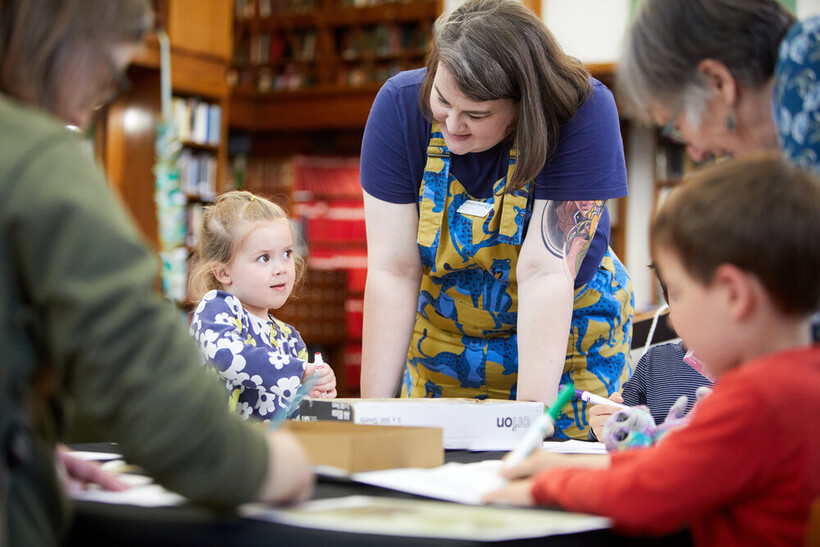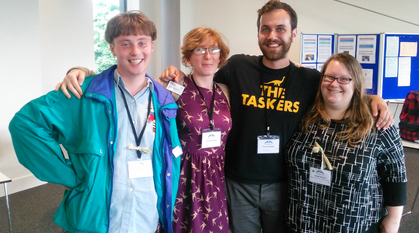Getting things in proportion
Kit Fotheringham, Britain Yearly Meeting Trustee, shares different models of giving to explore what a "right proportion of money" might be to support Quaker work.

Before I became a Quaker, I was a member of a faith which had a very forthright and open approach to giving to support the church. Baked into the faith was an expectation that we would give a specific proportion of our income to the church. When I became a Friend, I loved the freedom to decide on what I believed. At the same time, I felt somewhat lost on how much should I give.
In Advices & Queries, Friends are asked if they "give a right proportion of… money to support Quaker work". But what counts as a "right proportion"? There are different models for regular giving from various cultures and traditions. I've found this to be useful guidance when deciding about my own regular giving.
Giving a fixed proportion
In Jewish and Christian traditions, regular giving was based on tithing (meaning a tenth part, or 10%). This meant bringing offerings in-kind to the place of worship, or a special storehouse known as a tithe barn. As societies moved away from agriculturally based economies, tithing was instead attached to the value of the land. Early Quakers were persecuted for refusing to pay tithes as those funds would have gone to the coffers of the established church. Instead, giving money to the Religious Society of Friends has been less about sums derived from doctrine, but about supporting the life and witness of Friends at home and abroad.
In Islam, the proportion of Zakat is set at 2.5% for wealth and assets owned above a minimum threshold. Those under the threshold are therefore exempt from feeling under an obligation to contribute financially. Because Zakat is based on net wealth, it also takes account of one's debts, rather than taking a set amount from income under the tithing model. This ensures the giver is self-sufficient before making any donations.
A set percentage of your income or assets is straightforward to calculate and means that your giving remains stable relative to your wealth. If you get richer, you give more, but if your income goes down, you would give less. However, a flat rate can also be regressive in economic terms because it asks more from those who have less disposable income. You could make your giving progressive by linking your giving rate to your tax band and adding or subtracting a percentage point to your chosen fixed proportion if you move between bands.
Giving up something
Those who practice fasting as an act of religious commitment are usually encouraged to give the cost of the food and drink they would have otherwise consumed. For example, Muslims who fast during Ramadan give a special type of alms known as Zakat al-Fitr so that others can afford to eat, and Christians who mark Lent and Advent are encouraged to give to charity during these times.
Perhaps there is something you might like to give up (dining out, entertainment) each month or during a set period?
Giving away the rest
In the story of the widow's mite, Jesus and his disciples observe people putting their offerings in the collection pot. The wealthy gave larger nominal amounts (and made a show of it), meanwhile a widow only gave two small coins, known as a mite. Jesus remarked that the widow had given everything she had left, whereas the wealthy givers still had plenty. Modern examples of showy philanthropy are only too familiar. But like Jesus taught his disciples, giving needn't be seen that way.
Some Friends today give in a similar way as we see in the widow's mite story. They meet all their regular expenses on food, housing and bills, as well as spending as normal on discretionary items. They might put some money away for a savings goal or a rainy-day fund. When they next get paid, they tot up how much they had left over from the previous period and donate the total of that amount. This method is particularly useful for those on low incomes or whose income fluctuates, making it hard to predict how much someone might need to keep for themselves.
How much should I give?
A new guide has been produced by a group of Friends, Giving Advocates, who are passionate about talking about giving and encouraging Friends to give. It's called How much should I give (PDF) and it provides some helpful ideas and questions.
Making a plan for regular giving
When you give regularly to an organisation, it is easier to plan expenditure. Other income streams, such as legacies and investments, can be less predictable. With more regular giving, Quakers in Britain can be more confident in adding to its existing programmes. You can approach your Treasurer for a donation form, or click the button below to give directly. Your regular donation will help us expand our work, offering more support to Quakers locally and stepping up our witness in the world.


